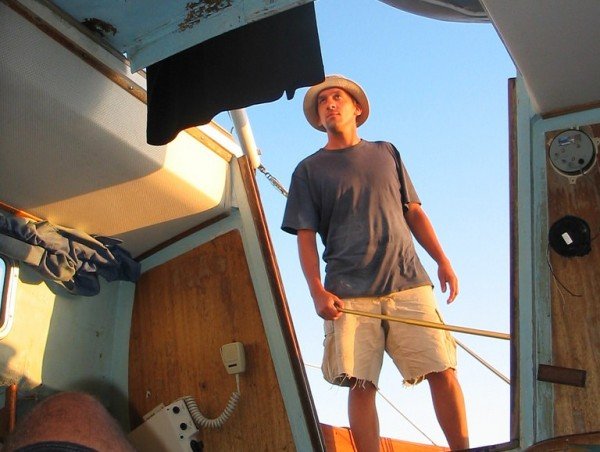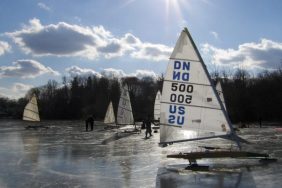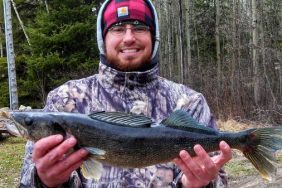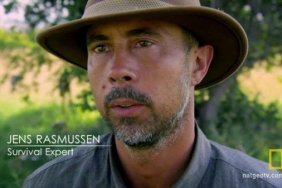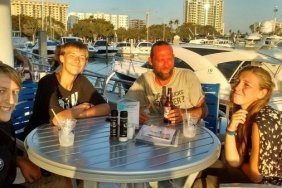Sailing is a thing to be done for the thing itself. And if any two sailors get together and start talking in terms of “I’ve been here,” and “I’ve been there,” you can be sure that before long – and allowing there is an available boat – the pair will find themselves clipping along famously, sails full, hull leaning smartly to leeward.
Generally, such last-minute trips are cooked up in bars, and this one was no exception.
It was around 9 p.m. one night in 2006 at the LaurelThirst Public House in Portland when we started talking boats. We spend our days working on boats at a Columbia River yard, and several pints into the evening, we began swapping yarns.
I’m an ocean sailor. River sailors are different. They know different things, like currents and submerged logs and sandbars and wind patterns and channel markers.
Todd sat leaned over his fourth pint, explaining to me how well he can read the river. He talked of knowing the wind patterns and being able to use the current to his advantage. I listened carefully, leaning over my pint as well.
“That’s why I don’t have a motor on my boat anymore,” he declared, amping up his rivermanship. Of course, and to the foreboding favor of this story, Todd keeps a sailboat on the river, and it was only right of me to suggest we go out for a sail immediately. After all, I wanted to see how to sail the river.
Next, we drove north in his 1982 rather used Jaguar – The “superior machine,” as I call it. After around 27 minutes, we came to a stop by a dark stand of trees, and started down a gangplank. We moved down the wood dock, past sleeping boats and rustic boathouses, until we came to the tip of the dock. I found myself alone at the very end, looking out at murky walls of trees that framed a narrow waterway. It was like the old south had taken hold of reality, and I couldn’t help, in my altered state, to feel a bit spooked.
Todd’s boat sat silent near the end, and to get to the main river, we made our way up a narrow channel, lined by thick leafy forest. We ghosted upwind through this bayou-like, pitch-black landscape, tacking to within feet of the shore on either end. Once we cleared the channel, we set a broad reach for the middle of the river, but not until after I came about to ensure a return to the dock was possible. Assured, we made for the river.
Once on the open main channel, we had a fresh breeze for a good run across, but then the wind weakened, and made the current seem a little louder.
I could see the shore in the form of a jagged black wall, and it was moving rapidly past. We were drifting down river. We had no motor, and Todd’s ability to read the river seemed to vanish with the wind. Next, the sound of rushing water grew off our stern, and it became clear that we were headed for an unsafe spot, with no light and no way to see or judge distances. All of this would have been perfectly fine, and actually was, except for the small detail of the morning. I was due to pick up my one-year-old daughter Gwen at 9:30, and that superseded everything. Also, and not withstanding being late collecting her, it would not help matters if her daddy ended up stranded and shivering on some muddy island half way to Astoria.
We threw out the hook and called it a night.
Safely at anchor – or so we hoped; massive cargo ships pass through this channel several times a night – we settled in to sleep, and wait for dawn. We had a jug of water but no food or flame, and no booze, and Todd had left his cell phone in the Superior Machine. For lack of a sleeping bag, a Dacron headsail made a fine blanket, and I wrapped myself up on the portside bunk, and Todd did the same on starboard.
The rush of the river put an urgent gurgle on the hull.
“You know, the German Army planned to have Russia all wrapped up by the fall of 1941,” I said, bundled up in Dacron and pub-going clothes. “So they brought no winter gear along. So, when they found themselves bogged down in the snow months later, Hitler asked the German people to send the troops winter clothes. So, at the Russian front, there were hardened Wermacht soldiers dressed in women’s fur coats.”
Todd let out a small laugh and rolled over to sleep.
When I poked my head out in the morning, a cargo ship, all red and black, named the Sammy Aurora, churned by in the channel, its bulb keel breaching the surface, creating white, rolling waves. We climbed out and hoisted sail, catching the early morning breeze, but we heeled hard to port in a gust as Todd attempted to pull up the anchor, and he went in up to his knees. Then, it started to rain.
We washed ashore at Sauvie Island around 7 a.m., and the smell of bacon filled the cold air as tree bark camouflaged fishermen milled about with beers in their hands. I borrowed a cell phone to tell Gwen’s mom what was happening. She was less than surprised.
Within an hour, we were motoring swiftly back to the dock, more than two miles up river, with the help of a pack of fisherman in an 18-foot boat with an 8-horse outboard. I slipped them a 20 for their help, and soon we were back on the road, the Superior Machine carrying us in a gently British way back to Portland, and back to our busy days.
Had my daughter and her mom not been counting on me, I might well have spent the day jousting with the river, trying to exhaustion to sail upstream. Regardless, I did learn something about sailing the river, and it is a lesson that runs counter to my purist ideals as a sailor. The lesson is this: Bring a motor.
